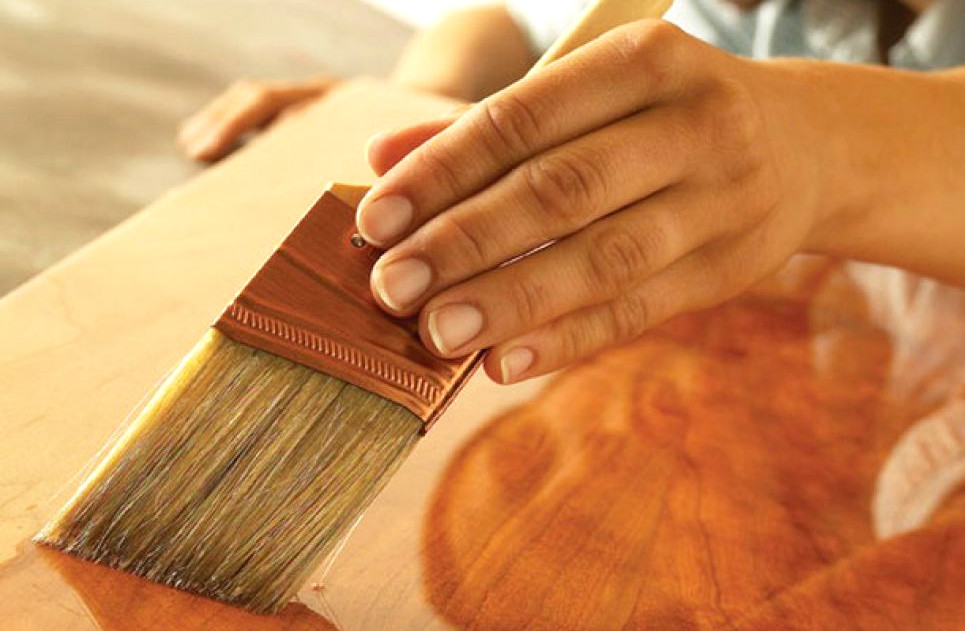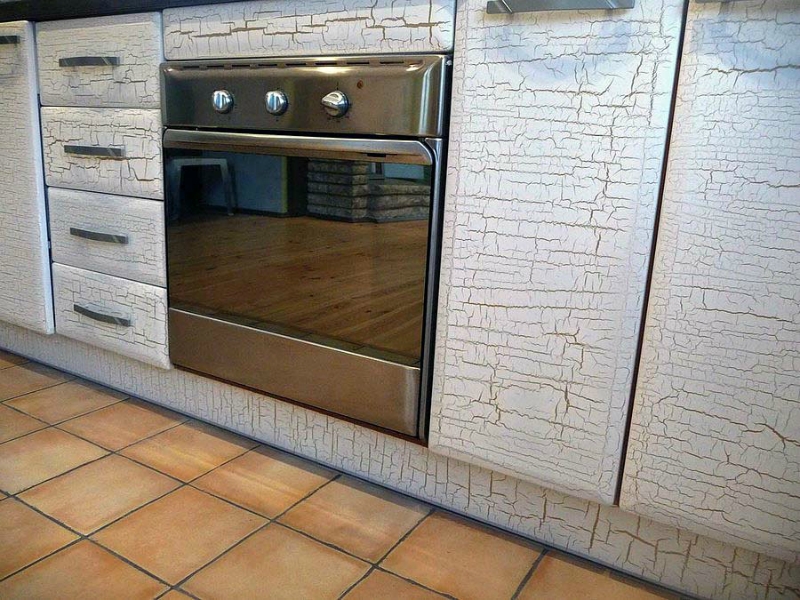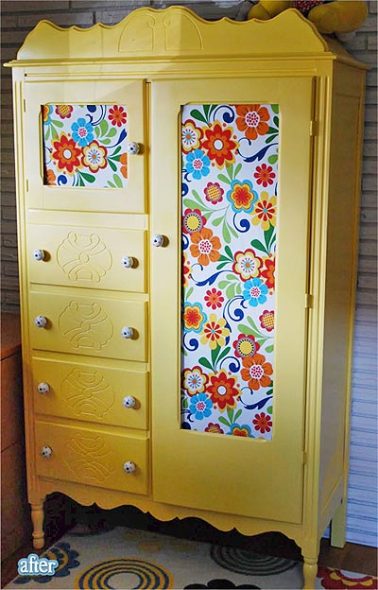Ways to restore the old cabinet, how to do it yourself

It so happens that old furniture becomes unusable. You can use it, but the appearance does not cause positive emotions. To extend the life of the product, you need to restore it. Before you restore the old cabinet, you need to decide on the set of tools, as well as the equipment that will be used.
What is required
The components that will be used during the restoration of the product depend on the chosen method of work. If there are no certain skills in decoration, do not despair - we recommend paying attention to these types of works:
- cabinet painting;
- application of craquelure varnish;
- decoupage technique.
The indicated methods of repairing the product can even be carried out by a teenager. Do-it-yourself cabinet restoration requires an idea or a choice of style for a future masterpiece. To do this, you should turn to the existing interior: if it is made in a vintage style, the craquelure varnishing technique is suitable. If the interior is made in a classic style - choose a painting with subsequent application of the image. When the design of the room requires elements of romance, decoupage will be a good solution.
Restoration of a cabinet from chipboard begins with the repair of visible defects. To go to the decor of facades and ends, it is worth carefully inspecting the hinges of the product, checking the integrity of the fittings. Open the cabinet and inspect the drawer sliding mechanisms, and also check the interior for chips and holes. All noticed defects must be eliminated. This can be done easily with a hammer and nails, as well as by changing faulty mechanisms to new analogues.
A universal list of tools for the restoration of an old cabinet with your own hands looks like this:
- sandpaper or grinder - to give the plane a flat and smooth surface;
- screwdriver or screwdriver in diameter of all bolts - for possible regulation of the product and removal of accessories before stripping;
- spatula - for coating holes and chips;
- paint roller and narrow brush - in order to update the coating;
- joiner's glue or PVA;
- a set of screws for replacement.
Directly for decoupage technique, you will need napkins with a pattern or ornament, acrylic varnish, a special thin synthetic brush with a bristle in the form of a fan. Also, restoration of the old cabinet implies the presence of a primer, putty for wood, paint for working in the painting technique, masking tape. To use craquelure, you need a varnish of the same name.
It is necessary to immediately decide on the idea of restoration, because without the idea to make a beautiful product it will not work. Consult with household members and find out about their desires.
Stages of restoration by painting
Before studying the master class on dyeing products for storing clothes, it is recommended to carry out preparatory woodwork. These include cleaning and grinding of the old coating. It is important to achieve a smooth surface so that when painting, the brush evenly imposes a composition.
To work in small areas, use sandpaper to process a large area - use a grinder. The final stage of preparation always involves the use of sandpaper on the tree with the finest grain size.
As soon as the work with defects is completed, the decoration masters advise to proceed to the primer. This stage is no less important than the painting itself. It is necessary to restore the old cabinet with your own hands qualitatively, so the soil will be a great solution: it will hide all the cracks and fill the pores. In addition, the primed coating absorbs less paint composition.
After waiting for the complete drying of the product, we restore the cabinet with paint:
- we turn off all the accessories, which will prevent the brush from penetrating into bottlenecks;
- those elements that are not amenable to removal - we seal with masking tape to preserve their original appearance;
- for painting wood it is better to use special acrylic compounds - they better lie on the plane and create a protective layer of the film. Pour the paint into the container for the roller and get to work;
- first we process all the internal elements: shelves, compartments, mezzanines. After that, we proceed to painting the facades, as shown in the photo;
- after the first coat has dried, apply a second, and if necessary, a third coat of paint. This is necessary to achieve color brightness and complete painting of all gaps;
- the dried cabinet must be opened with varnish in several stages.
The restoration masters advise showing imagination and making the cabinet not in a monophonic design, but adding several colors to the facades. The simplest option is geometric shapes. To do this, using a masking tape, glue some part of the facade and paint the remaining area in a different color. For originality, you can design a cabinet in contrasting performance.
Using Craquelure
The technique of coating wooden products with a special varnish consisting of 2 components will make it possible to transform a wardrobe that has gone out of fashion. With it, you can really create an old wardrobe that grandmothers used. To perform the work you will need PVA glue, craquelure, acrylic paint and varnish, a wide brush.
The technique also does not require specialized talents, all manipulations are similar to ordinary staining. The action algorithm looks like this:
- preparation - the old product is polished, if necessary, putty is used to seal large holes. The final stage of preparation will be a primer in several layers;
- staining - to work, you need compositions of 2 colors: dark and light. They do not have to be in harmony - the dark version is used to design cracks, and the light is used for basic staining. Using a brush, apply a dark color, evenly distributing it on the surface of the product;
- craquelure - as soon as the paint coat has dried, you can apply craquelure. This must be done quickly and preferably in several layers - the greater the thickness of the varnish, the more visible the cracks. Dry the product to a state of slight sticking of fingers;
- the second color - a craquelure master class at this stage suggests applying a light color and waiting for the gradual drying. As soon as the coating dries, a characteristic mesh will become visible;
- applying varnish - a completely dried-up restored cabinet is covered with acrylic varnish to fix the effect.
When choosing a craquelure, it is worth considering that if there is an image on the cabinet - you should not affect it. For this, a two-phase composition is used, the work with which is characterized by application in 2 stages.
This technique is suitable for restoration of cabinet facades, however, similar manipulations can be performed inside the product. A beautiful antique cabinet will appeal to all lovers of the vintage interior.
Decoupage
Modern shops of creativity will surprise any novice master or lover with an abundance of an assortment of napkins and decoupage paper. Napkins have a small format and are often used to decorate small items. In the case of the cabinet, they can be considered as elements for the design of drawers or mezzanines. Decoupage paper is available in large sizes, so it will be optimal for this type of work.
Before you restore the cabinet, select a plot for the product. It can be floral motifs, historical ornaments, images of people, heroes or just vintage pictures. Decoupage consists of several stages:
- The surface prepared for repair is ground and primed in several layers. After that, light acrylic paint is applied to give a background;
- at this stage, paper materials are applied to the surface of the cabinet, mentally inventing the plot and location of each detail;
- Transferring pictures to the surface is considered one of the most difficult tasks. You can use the "file method" for this. Prepare a regular office file, remove the 2 upper layers from the napkin and place it on the file with the image down. Next, take a spray bottle with water and gradually moisten the entire cloth. As soon as it gets wet, carefully try to expel all the bubbles out with your fingers. If this is not done, wrinkles will be visible on the product. As soon as the napkin has become even and smooth, we attach it with the file to the surface of the cabinet. Carefully delete the file and proceed to the next step;
- using a thin synthetic brush and special glue, process the surface of a napkin or paper in 1 layer;
- as soon as the cloth adheres and dries, it is necessary to treat the plane with acrylic varnish. The photo shows the decoupage options of old cabinets.
Restored furniture gives the room a fresh look - it looks original, non-standard. Such products will delight all guests, positioning the owner as a novice decor master.
Video





































